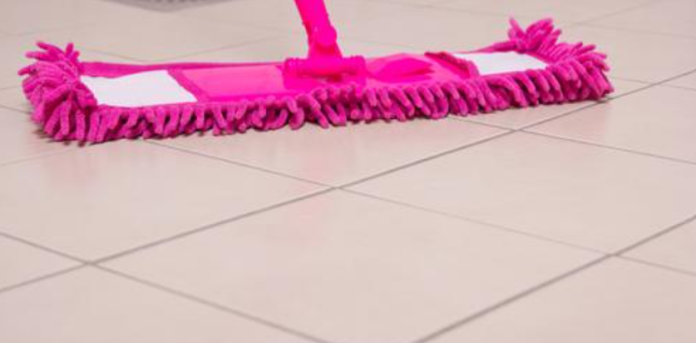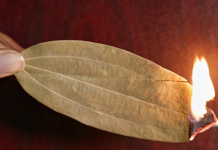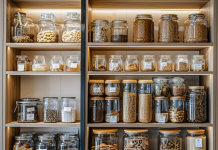Not all floors are the same. Each type of floor has its own characteristics and therefore its own cleaning requirements. To avoid damage, it’s best to know how to clean your specific type of floor. Are you going to clean wood the same way you clean tile? We hope not. If you don’t know where to start, don’t worry. We have the easiest and safest ways to keep your floors, no matter what type, looking like new and spotless.
Natural stone flooring
What does the stone lack? Acidic products. This means that the cleaning miracle of vinegar should stay in the pantry, folks. Bleach and ammonia also destroy this type of flooring. Your best bet is a pH-neutral, non-chelating cleaner (like this Naturally It’s Clean Floors cleaner) that won’t accidentally react with the minerals in your stone floors.
For unsealed stone tiles, simply use a microfiber mop and hot water, or a steam cleaner for more severe damage. No chemicals should be used on these tiles.
Vinyl Flooring
Vinyl floors are very popular in kitchens and bathrooms and are very easy to clean. They should be cleaned once a week with a mixture of 1/4 cup vinegar in a 16-ounce spray bottle with a drop of dish soap and warm water. Spray this mixture on the floor in sections and wipe with a microfiber cloth or mop.
Occasionally, try steam cleaning vinyl floors to get a deep clean. Steam removes stains and bacteria from the tiles AND the grout, so you can be sure your area is completely clean.
If the grout is spectacularly dirty, you may have to hose it off. Sounds expensive, right? Not so with Grout Grime Buster 3000…which is a simple product you can do for less than $5.
Linoleum Floors
Unlike the nearly indestructible vinyl floors, linoleum floors are more delicate and should be cleaned with a little more care. Typically made from materials such as linseed oil, resin, limestone, wood fiber and cork dust, linoleum floors are colored with mineral pigments. This means that you will need to treat them in the same way as natural stone and cork floors (which you will see below).
Put a few drops of dishwashing detergent in a spray bottle with warm water. Use this mixture only to spray the surface, then use a microfiber cloth or mop to clean the floor. The floor should dry almost immediately, but if it feels sticky, wipe it again.
- Cork floors
Natural cork floors are beautiful, but they are very easily damaged, especially by water. That’s why most cork floors are sealed, but even so, proceed with caution. Clean them once a week with a solution of a quarter cup of vinegar, a drop of dish detergent and warm water in a spray bottle. Be careful not to agitate the mixture, as it will produce foam, which is not very good for this type of floor.
Laminate flooring
Although laminate flooring looks like hardwood, it’s important to remember that it requires VERY different cleaning. You’ll see how laborious hardwood can be, and you’ll have a slightly easier job if you have a similar laminate. Laminate is designed to withstand sunlight and light to keep it looking new for a long time. That said, you should never put liquids or wax on laminate flooring; moisture will seep under the planks and ruin the laminate.
Instead, dry mop and vacuum regularly, and use only a slightly damp cloth to treat stains.
Wooden Floors
Beautiful and elegant, wood floors need a lot of attention. And if they’re not cleaned properly, it’s as if they weren’t cleaned at all. First, determine the finish of your wood. The two most common are polyurethane and wax. For a quick check, rub the floor with your finger: if a stain remains, the finish is a wax.
Wax finishes and untreated wood (uncoated hardwood) should not be washed. But you are not immune: you must sweep, dust or vacuum regularly, just as with laminate floors.
For polyurethane finishes, you have two different solutions to choose from. The first is a mixture of ¼ cup of mild or pH-neutral soap (try Seventh Generation’s Natural All Purpose Concentrated Cleaner) with water in a bucket. Use a damp mop to clean the floor and a microfiber cloth to dry it.
The second solution is a vinegar mixture, which some flooring experts recommend avoiding, as vinegar can dull the shine of the floor over time, but this solution is good to use when needed or if you don’t have a pH-neutral soap on hand. Mix white vinegar and dish soap in a bucket of warm water. Use a microfiber mop to clean the surface and a microfiber cloth to dry.
Tile floors
Tile is actually the more stylish big brother of vinyl flooring – no offense to vinyl, of course. But that means that while tile is more expensive to install than vinyl, it’s just as easy to clean! Simply mix 1/4 cup of vinegar in a 16-ounce spray bottle with a drop of dish soap and warm water to spray the tile surface and wipe it down with a mop or microfiber cloth. For occasional deep cleaning, be sure to steam clean the tile and grout.
Carpets
Unlike other surfaces, carpets are a little different. But they are still a type of flooring. They just have some slightly different rules applied to them. There are two different types of cleaners for cleaning carpet on a regular basis: a detergent-based cleaning solution and a household cleaning solution, which you can learn more about here. Both are easy to make at home, although the detergent solution (just detergent and water) is my favorite.
For easy spot cleaning-for those times you’ve dropped dinner on the carpet-mix equal parts vinegar and baking soda to a thick paste. Dilute this mixture with warm water until it becomes a thin liquid and rub it into the stain with an old toothbrush or sponge.
Do you have another type of floor and how do you clean that surface?
Share your thoughts in the comments .










